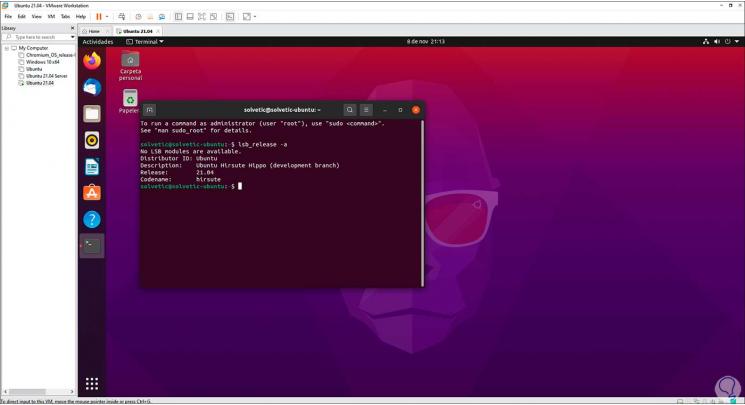


- UBUNTU SERVER VDI IMAGE HOW TO
- UBUNTU SERVER VDI IMAGE INSTALL
- UBUNTU SERVER VDI IMAGE PASSWORD
- UBUNTU SERVER VDI IMAGE ISO
You can proceed with the installation without a working network interface. Your operating system installer may warn you about failed automatic networking configuration. Follow the operating system installer’s instructions.
UBUNTU SERVER VDI IMAGE INSTALL
This will open up a virtual console that you can use to install the operating system of your choice. Once the VM is running, click on the Console dropdown button and select noVNC. You will see that the VM is created and available on the left side pane.Ĭlick the Start button on top of your virtual machine summary interface to start the VM. Review the VM configuration again and click the Finish button. Under Network settings, leave the default settings and click Next to go to the Confirm tab. Under the Memory tab, provide the amount of RAM you want to assign to guest VM. Under the CPU tab, select the numbers of CPU core you want to assign to the VM. Where qcow2 offers additions features such as compression, AES encryption, and incremental backups. raw is slightly faster than qcow2 as it has very little overhead and no associated metadata. You also have the option to choose Raw disk image(raw) or QEMU image format(qcow2). Make sure to enable the Discard option, this will make sure that a TRIM action in the guest OS will discard the storage space used by deleted files. Under the Hard Disk tab, select any storage disk and provide the guest VM disk size in GB. Under, System tab, leave the default settings and click Next. On Guest OS type, select Linux and 5.x-2.6 Kernel in the version dropdown.
UBUNTU SERVER VDI IMAGE ISO
Select local storage and choose the ISO image you have uploaded. You can use the default values for other fields. On the General tab, provide any Name to your virtual machine. This will open up a pop-up to create a virtual machine. Now that we have the ISO file uploaded, click on the Create VM button from the top. Once the upload finishes, you will see the ISO file in GUI. Click the Upload button to upload the ISO file.


Select ISO image from the content drop-down and select the ISO file you want to upload. On a fresh installation, you won’t see any ISO images.Ĭlick on the Upload button from the content section. Now, click on the local disk from the left side pane and then click on the Content tab to see the list of ISO and container images. Expand the node to see the list of attached local disks. Leave the Linux PAM standard authentication in the Realm dropdown and click on the Login button to log in.Īfter logging in, on the left side panel, you will see the node managed by Proxmox.
UBUNTU SERVER VDI IMAGE PASSWORD
Click on advanced, and proceed to the Proxmox web interface.Įnter root as username and password from the service details page of the snel client area. It is possible that you will see a warning that the certificate is not reliable. Make sure to type https as Proxmox GUI is only available over a secure connection. Navigate to via your browser You may also use the auto-generated server domain name found on the same page instead of the IP address. You can download the ISO from the Ubuntu website.įind out the primary IP address of your server from the service details page of your server in the snel client area.
UBUNTU SERVER VDI IMAGE HOW TO
This tutorial will also teach you how to upload the ISO of your choice from Ubuntu. In this tutorial, you will learn how to create a VPS on a freshly installed Proxmox VE server.


 0 kommentar(er)
0 kommentar(er)
